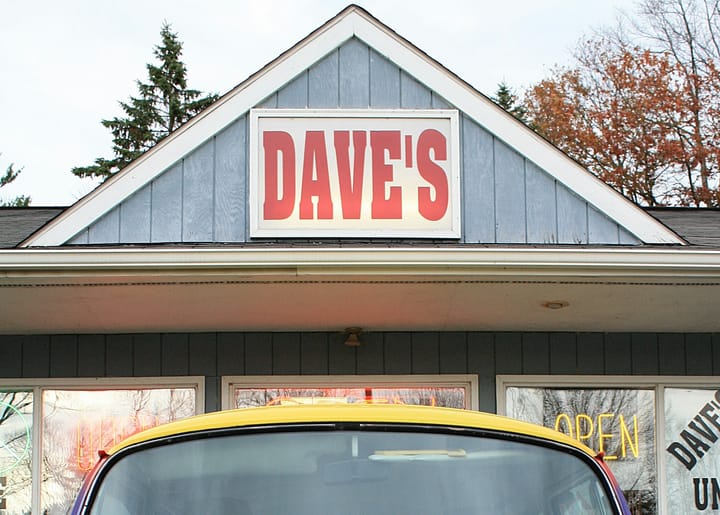How Ogilvy Masters The Art Of Trojan Horse Seduction In Advertising

Ogilvy is renowned for its innovative advertising strategies, but one tactic stands out as a hallmark of its approach: Trojan Horse Seduction. This method involves subtly drawing in the audience with an appealing, familiar message or concept and then revealing a more profound, often surprising truth that shifts perceptions and prompts action.
Ogilvy has leveraged this tactic extensively over the past five years, deploying it in over 12 different campaigns—far more than any other top 20 agency. These campaigns have been crafted by different teams across various regions and for diverse objectives, showcasing the versatility and effectiveness of this approach. Notably, these efforts have not gone unnoticed; Ogilvy’s Trojan Horse Seduction campaigns have won over 20 awards, proving their ability to engage and impact audiences on a global scale consistently.
In this post, we will explore how Ogilvy effectively employs Trojan Horse Seduction by examining the framework behind this tactic and highlighting key campaign examples.
The Framework of Trojan Horse Seduction
Trojan Horse Seduction is built upon a simple yet powerful three-step framework: Seduce, Shock, React. Ogilvy has utilised this structure repeatedly to create award-winning campaigns that resonate with diverse audiences, regardless of region or objective. Let’s delve deeper into each step to understand how this tactic works.
- Seduce: Embrace the Status Quo
- The first step is to attract the audience by presenting something familiar, comfortable, or widely accepted. The campaign begins by aligning itself with the audience’s existing beliefs or desires, creating an inviting entry point that does not trigger immediate resistance.
- By appearing to support or align with the status quo, the campaign seduces the audience into a false sense of security, making them more open to engaging with the content.
- Shock: Reveal the Truth (and Call to Action)
- Once the audience is engaged, the campaign introduces a shocking or unexpected truth that disrupts their initial perceptions. This is the twist—when the campaign reveals its true intention or message.
- The shock is designed to create cognitive dissonance, prompting the audience to reconcile the new information with their previous beliefs or assumptions. This jarring realisation is often accompanied by a strong emotional response, which is crucial for ensuring the message is memorable.
- React: Target Audience Reacts as Intended
- The final step is the reaction. The campaign anticipates and plans for the audience's emotional and behavioural response, whether to spur action, change perceptions, or evoke empathy.
- The desired reaction often aligns with the campaign's underlying objectives, such as encouraging donations, changing behaviours, or generating social media buzz.
Ogilvy’s Mastery of Trojan Horse Seduction: Campaign Examples
To illustrate how this framework works in practice, let's explore three of Ogilvy’s most notable campaigns that exemplify Trojan Horse Seduction.
1. HotelBnB (2019) – Seducing to Shift Perceptions and Sell
- Brand: Hotel Honduras Maya
- Tactic: Seduce by Embracing the Status Quo
- Description: To counter Airbnb's growing popularity among younger travellers, Ogilvy reimagined Hotel Honduras Maya as "HotelBnB." The hotel’s rooms were disguised as unique Airbnb listings, and the staff posed as independent hosts. This initial presentation appealed to millennials drawn to Airbnb’s reputation for unique and authentic experiences.
- Shock: Once guests engaged with the listings, they realised these were actually hotel rooms, complete with all the amenities of a traditional hotel—pool, bar, jacuzzi—that far surpassed the typical Airbnb offering.
- React: This realisation led to a positive reaction among guests who enjoyed the best of both worlds—Airbnb's independence and the luxury of a hotel stay. The campaign effectively shifted perceptions by showing that hotels could offer uniqueness and superior amenities, resulting in increased bookings and a broader customer base.
2. Narco Store (2020) – Seducing to Shame and Spur Action
- Brand: Fundación Colombia Conmemora
- Tactic: Seduce by Embracing the Status Quo
- Description: In Colombia, narco culture is often glamorised due to its portrayal in popular media. To confront this perception, Ogilvy created "Narco Store," an online shop filled with merchandise celebrating figures like Pablo Escobar. Initially, the store seemed to embrace and glorify the narco lifestyle, attracting Colombians interested in the products.
- Shock: When visitors tried to purchase items, they were met with videos and stories of real victims affected by drug violence, revealing the harsh reality behind the glamorised image of narco culture. This unexpected twist turned the initial curiosity and admiration into a moment of uncomfortable truth.
- React: The campaign evoked feelings of shame and empathy, prompting many visitors to abandon their purchase intentions and instead donate to causes that support victims of drug violence. The campaign successfully used Trojan Horse Seduction to change public perceptions and spur direct action.
3. Last Tree Standing (2018) – Seducing to Provoke Outrage
- Brand: Greenpeace
- Tactic: Seduce by Embracing the Status Quo
- Description: To raise awareness about illegal logging in Poland’s Białowieża Forest, Ogilvy and Greenpeace created a Minecraft map replicating the forest, allowing gamers to experience it virtually. The map quickly gained popularity among the gaming community, engaging an audience that might not typically care about environmental issues.
- Shock: After some time, the lush forest map was replaced with a barren landscape showing only one lone tree. This dramatic change shocked the audience, making them confront the reality of deforestation.
- React: The shock prompted gamers and other viewers to take action, such as signing petitions and sharing their outrage on social media, ultimately leading to government intervention. This campaign used Trojan Horse Seduction to provoke outrage and catalyse real-world change.
Why Trojan Horse Seduction Works for Ogilvy
Ogilvy's success with Trojan Horse Seduction lies in its ability to tap into fundamental human psychology. Here’s why this tactic is so effective:
- Engages Emotionally from the Start: By seducing the audience with familiar or appealing concepts, the campaign creates an initial emotional bond. This connection makes the audience more likely to stay engaged and open to the subsequent message.
- Creates Cognitive Dissonance: The sudden reveal of the deeper truth shocks the audience, creating cognitive dissonance. In this psychological state, people are motivated to resolve the conflict between their previous beliefs and the new information. This often leads to a change in perception or behaviour.
- Encourages Action and Shareability: Campaigns that seduce and shock are highly shareable. The emotional journey—from comfort to surprise—encourages people to discuss, share, and engage with the campaign, amplifying its reach and impact.
Summary
Ogilvy's mastery of Trojan Horse Seduction demonstrates how effective advertising can be when it leverages psychology, emotion, and surprise. By seducing the audience into a false sense of familiarity, only to reveal a deeper, more provocative truth, Ogilvy has created some of the most memorable and impactful campaigns in recent years. Whether shifting perceptions, spurring action, or provoking outrage, this tactic has proven to be a powerful tool in Ogilvy’s creative arsenal. It is, of course, also a master of Trojan Horse Provocation - a tactic far more universal - but that's a post for another day.



